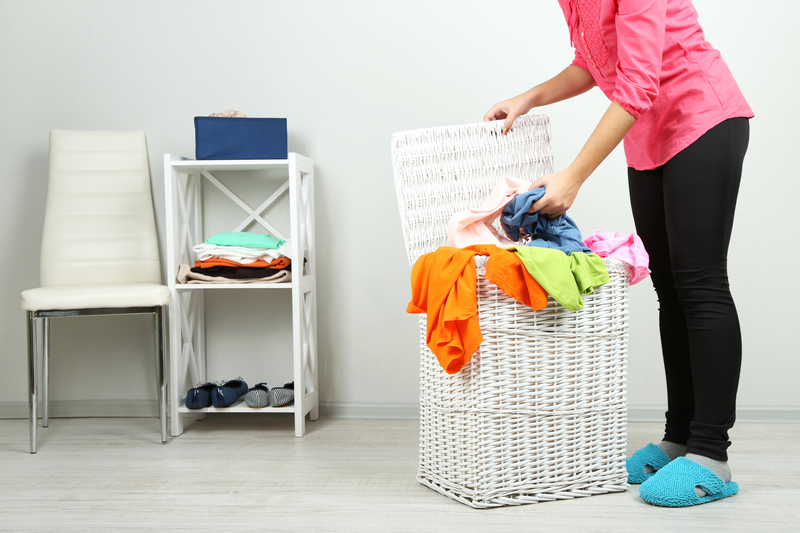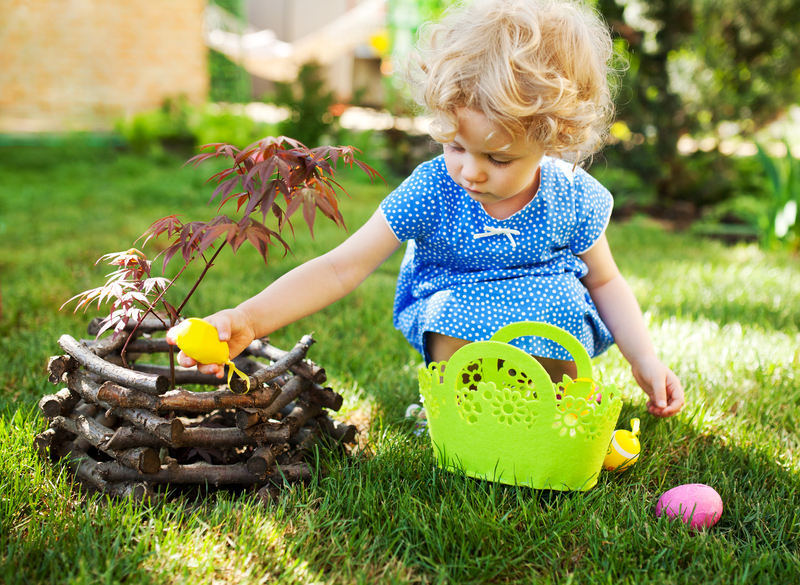Create a Mold-Free Bathroom with These Expert Tricks
Posted on 16/09/2025
Create a Mold-Free Bathroom with These Expert Tricks
A sparkling, mold-free bathroom not only looks appealing but is essential for your health and the longevity of your home. Bathrooms are naturally damp environments that can create the perfect breeding ground for mold and mildew, causing unsightly stains, musty odors, and even respiratory issues. If you're tired of battling persistent black spots and unpleasant smells, you've landed in the right place. This comprehensive guide will teach you cutting-edge, expert ways to prevent mold in your bathroom so it remains a fresh, safe, and inviting space.

Why Mold Thrives in Bathrooms
Understanding the causes of mold growth in bathrooms is crucial to effective prevention. Mold spores are ever-present in the air, but they need certain conditions to flourish:
- High humidity
- Poor air circulation
- Lack of sunlight
- Standing water
- Organic materials like wood, fabric, and soap scum
Showers, tubs, sinks, and even toilets increase the moisture and humidity, creating an inviting atmosphere for mold. But with the right precautions, you can create a mold-resistant bathroom.
Ventilation: The First Defense Against Mold
Effective Fan Use
Proper ventilation is your number one weapon. Exhaust fans efficiently remove humid air, which inhibits mold formation. Make each shower or bath count:
- Run the fan during bathing and for at least 20 minutes afterward.
- Keep the door open after use to allow air to flow.
- Periodically clean the fan's grill and blades to maintain performance.
Natural Ventilation
If possible, open windows or doors for a steady breeze. Do this even in winter for a few minutes each day! If privacy is a concern, consider frosted glass or window film.
Pro Tip:
Install a humidity-sensing switch that automatically turns on your exhaust fan when moisture rises above a safe level.
Keep Moisture in Check
Wipe Surfaces Dry
Water left pooling on tiles, countertops, or shower doors is a recipe for mold. After showering or using the sink:
- Wipe down tiles, glass, and fixtures with a squeegee or microfiber towel.
- Don't forget behind shampoo bottles and soap dishes.
Pay special attention to grout lines--these tiny crevices are notorious for trapping moisture and developing stubborn black mold. Drying them prevents this!
Mop Up Quickly
Address any leaks or spills right away, especially under sinks, near toilets, and around the tub.
Smart Storage Solutions to Prevent Mold
Clutter breeds mold. When items are jammed together, air can't circulate to dry damp things, leading to mildew. Here's how to organize for a mold-free bathroom:
- Store toiletries and cleaning products in closed, easy-to-clean containers.
- Hang towels and washcloths spaced apart for speedy drying.
- Install racks or hooks to keep bathmats and loofahs off the floor.
- Avoid keeping laundry baskets in the bathroom, especially if they store wet items.
- Opt for shower caddies that allow water drainage and air flow.
Choose Mold-Resistant Materials
Paints and Caulks
Paint your bathroom walls and ceiling with mold-resistant paints or sealers. These contain antimicrobial agents that stop mold in its tracks. When resealing the tub or sink, always use a mildew-resistant silicone caulk.
Flooring
Steer clear of carpeting and untreated wood. Instead, choose glazed ceramic tiles, natural stone (sealed), or luxury vinyl, which don't absorb moisture and are simple to sanitize.
Regular Cleaning: The Secret to a Mold-Free Bathroom
Weekly Deep Clean
A simple weekly cleaning routine can save you hours of intensive scrubbing later on. Focus on these mold hotspots:
- Shower stalls & bathtubs
- Sink and countertop edges
- Behind and underneath sinks and toilets
- Window sills
- Tile grout and corners
Use a mild bathroom cleaner with mold inhibitors. Vinegar and hydrogen peroxide are excellent natural mold killers--spray onto surfaces and let sit for several minutes before rinsing.
Grout Maintenance
Grout can darken quickly and harbor mold. Try these steps for a mold-resistant grout:
- Scrub with a mix of baking soda and water.
- Spray white vinegar, let bubble, then rinse thoroughly.
- Seal grout lines every six months to prevent moisture penetration.
Don't Forget the Small Stuff
Routinely wash shower curtains, bathmats, and towels. These soft surfaces frequently trap moisture, encouraging mold. Select quick-drying, washable materials.
Fix Leaks Promptly
A slow leak can cause hidden mold growth, especially inside cabinets or under the floor. If you notice:
- Soft walls or floors
- Peeling paint or wallpaper
- Persistent musty smells
- Dripping faucets or pipes
Improve Lighting and Warmth
Mold hates sunlight and warm, dry air. If your bathroom lacks natural light, consider these enhancements:
- Install LED lights rated for humid environments.
- Add a small bathroom-safe space heater to speed up drying after showers.
- Use lighter paint colors to reflect more light.
- Leave shower doors open when not in use to allow better air and light flow.
Mold-Preventing Plants for Bathrooms
Certain houseplants can reduce airborne mold spores and boost air quality. Try adding these mold-fighting botanicals:
- Bamboo Palm
- Boston Fern
- English Ivy
- Peace Lily
- Aloe Vera
*Just avoid overwatering to prevent mildew in the soil!
Advanced Mold Prevention Tricks from the Pros
Use a Dehumidifier
If your bathroom experiences high humidity (above 60%), install a bathroom-safe dehumidifier. Set it to maintain humidity between 40-50%, which is ideal for a mold-free bathroom environment.
Replace or Upgrade Insulation
Cold bathroom walls lead to condensation, which can feed mold behind tiles or under paint. Upgrading with mold-resistant insulation and vapor barriers acts as a safeguard.
Ultraviolet (UV) Lights
Install UV-C lighting (specifically designed for home use) inside ventilation ducts or near hidden trouble spots. These special lights kill mold spores and bacteria.
Replace Old Fixtures
Old, cracked, or corroded faucets, shower heads, and even tiles can trap moisture unseen. Upgrading to new, water-tight fixtures instantly improves your mold prevention strategy.
What to Do if You Find Mold in Your Bathroom
Despite your best efforts, some mold may sneak in. Here's how to handle it safely:
- Wear gloves and a mask to avoid breathing spores.
- Scrub hard surfaces with bleach (never mix with ammonia), vinegar, or a commercial mold remover.
- For porous materials like drywall or ceiling tiles, removal may be necessary.
- Replace any permanently stained or damaged silicone caulk.
How to Keep Your Bathroom Mold-Free Forever: Maintenance Checklist
Consistency is key to winning the war against mold. Stick to this checklist for a permanently mold-free bathroom:
- Ventilate after every shower or bath
- Wipe down all wet surfaces daily
- Clean and disinfect weekly
- Seal grout and re-caulk as needed
- Fix leaks immediately
- Launder towels and mats promptly
- Declutter regularly
- Monitor humidity levels

Mold Prevention FAQ
Can mold in the bathroom affect my health?
Absolutely. Bathroom mold spores can cause allergic reactions, asthma attacks, and sinus problems. Some types, like black mold, release mycotoxins that are especially dangerous for children, the elderly, or anyone with a weakened immune system.
How often should I replace bathroom caulk?
Once you notice discoloration, cracking, or mildew that doesn't scrub away, it's time to re-caulk. With regular maintenance, high-quality, mildew-resistant caulk can last up to five years.
Is it possible to have a completely mold-free bathroom?
With consistent care, strategic upgrades, and good habits, you can keep your bathroom virtually mold-free! Tiny spores might still enter, but they won't thrive if you deny them their favorite conditions: moisture and darkness.
Conclusion: Your Mold-Free Bathroom Awaits
Maintaining a spotless, mold-proof bathroom is about more than just cleaning--it's creating an environment where mold simply can't survive. Armed with these expert tricks, you can safeguard your bathroom year-round, boost your home's value, and, most importantly, protect your family's health.
Start today--implement these mold-prevention solutions for a fresher, healthier, and more beautiful bathroom!




